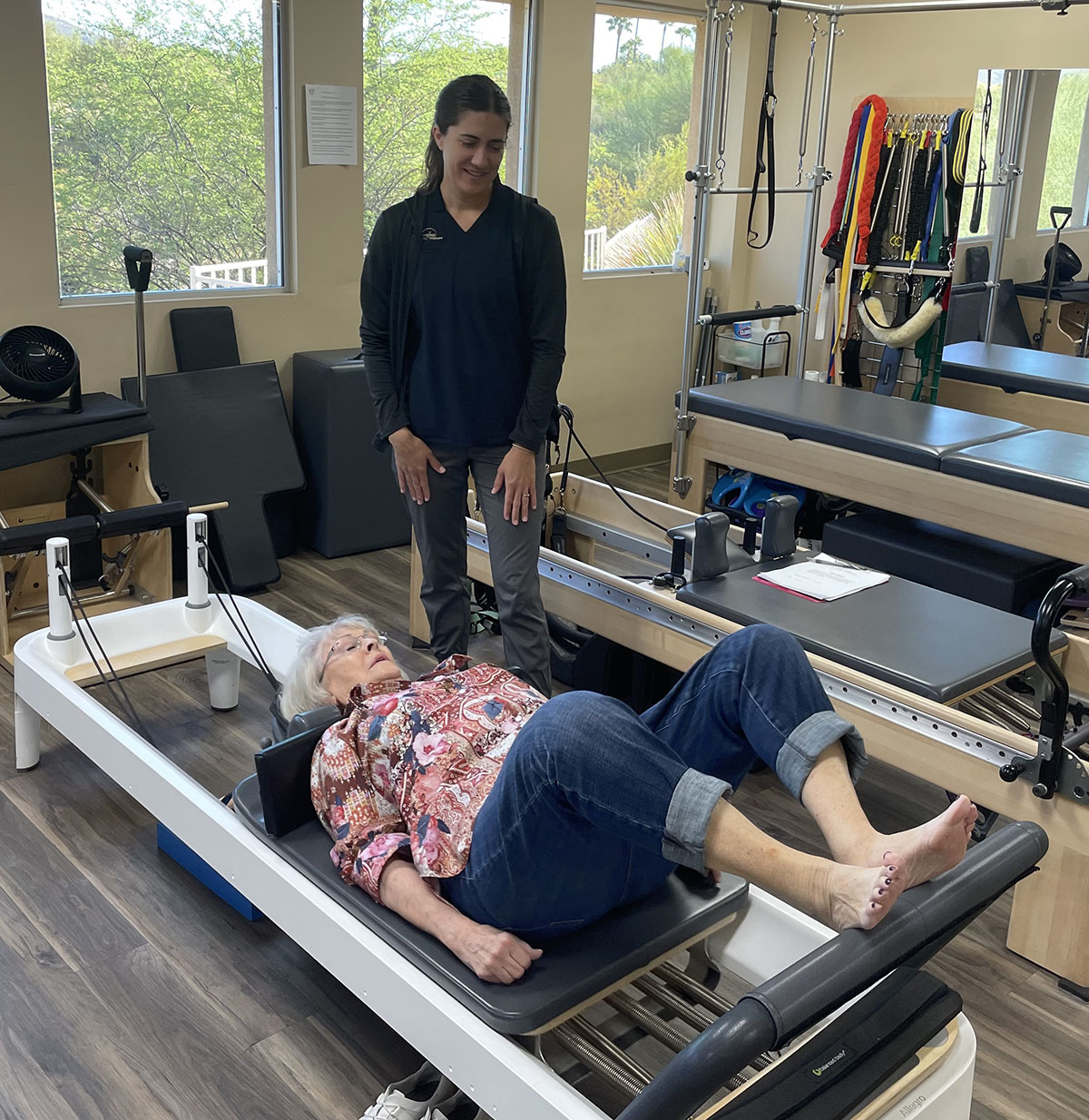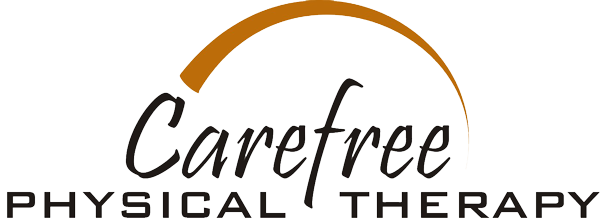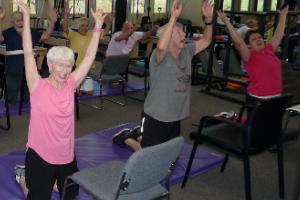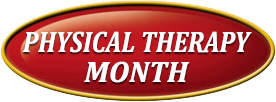Carefree Physical Therapy Services
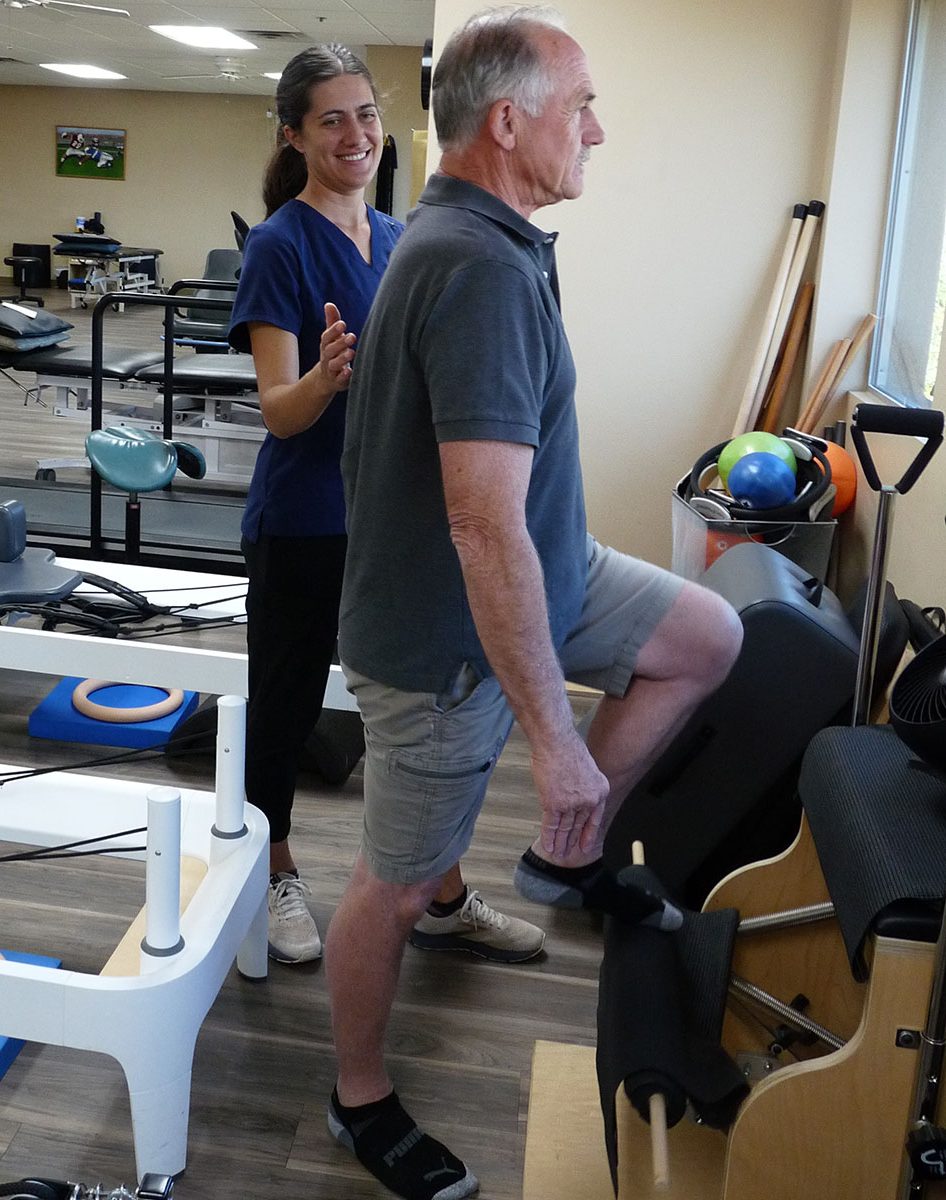
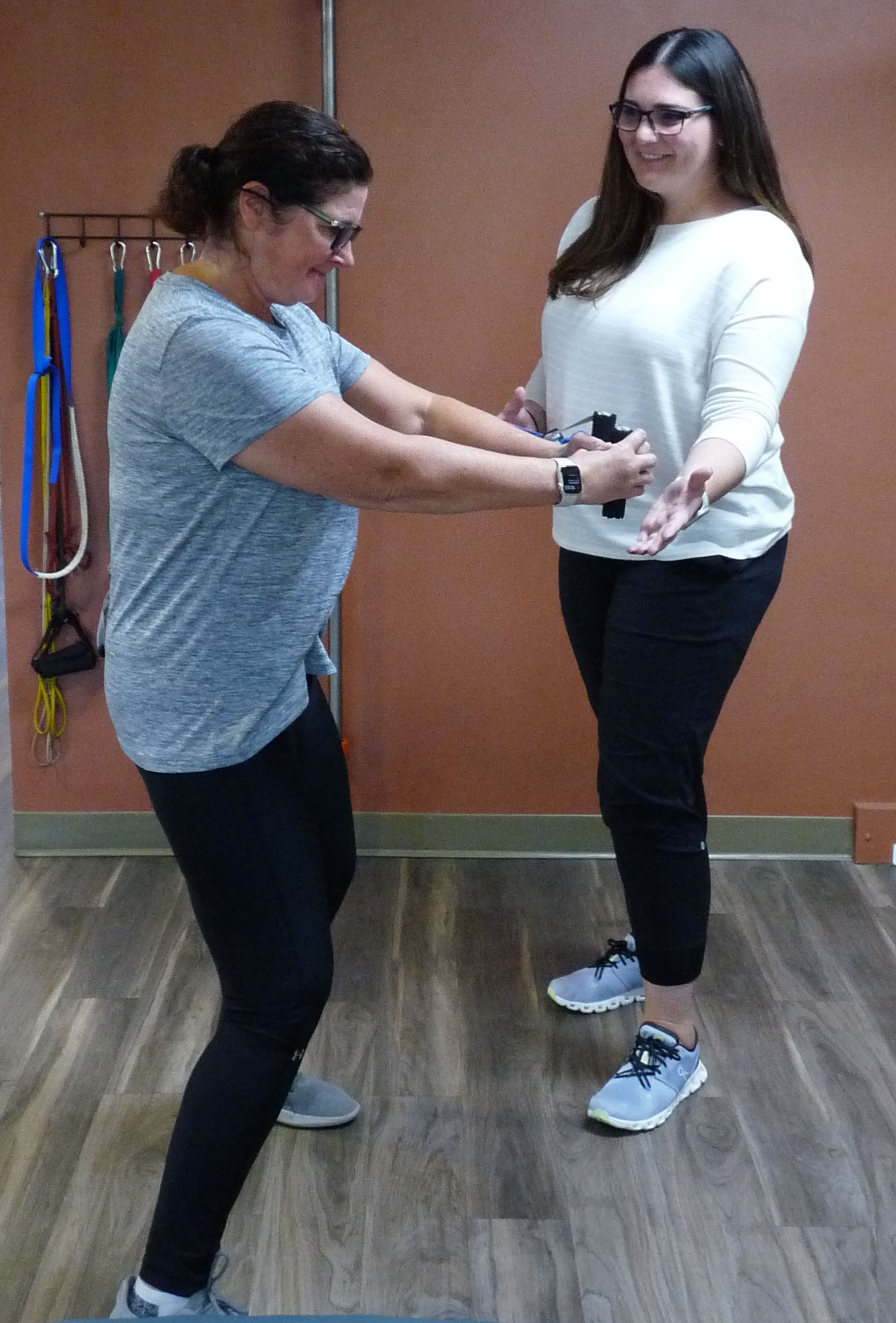
Orthopedic manual therapy means identifying movement abnormalities and correcting them. It relies on body movement analysis,  mechanical positioning, and manual (hands-on) testing to assess muscle and joint abnormalities. Orthopedic manual therapy techniques can be applied to the spine, shoulders, hips, or other extremity joints.
mechanical positioning, and manual (hands-on) testing to assess muscle and joint abnormalities. Orthopedic manual therapy techniques can be applied to the spine, shoulders, hips, or other extremity joints.
Such abnormalities may cause symptoms of pain, stiffness, weakness or instability. These changes may be about some part of the body not moving freely enough, and the treatment is to restore more normal movement. Other conditions may create pain or dysfunction because some parts of the body are moving too much and the goal of treatment is to stabilize and limit motion.
Treatments in orthopedic manual therapy are movement oriented. Manual (hands-on) techniques by your physical therapist can be passive or active, with specific positioning techniques. Therapeutic exercises are targeted at specific areas of weakness or dysfunction, and home exercises are prescribed to support the changes obtained by the manual therapy treatment.
CONTACT US TODAY TO LEARN MORE!
“Best staff ever from top to bottom. My therapists were very caring and very instrumental in my recovery. Love this place. “ BF
Augmented Soft Tissue Mobilization
Carefree Physical Therapy is recognized as a network member with physical therapists certified in the provision of the ASTYM system of soft tissue mobilization.
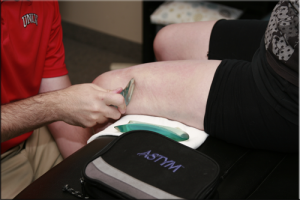 The ASTYM system is a therapy approach that addresses problems such as scarring, fibrosis and degeneration that occur in soft tissues. These problems may develop as the result of trauma, surgery or overuse. The System is effective for new injuries as well as chronic, nagging conditions. The ASTYM System uses instruments along the surface of the skin to locate these problem areas and start the body’s healing process. As the body heals, exercise and activity help guide the healing which allows you to return to activities without pain and limitation. The success of the ASTYM System is documented for a wide variety of diagnoses and many times it helps patient where other treatments have failed.
The ASTYM system is a therapy approach that addresses problems such as scarring, fibrosis and degeneration that occur in soft tissues. These problems may develop as the result of trauma, surgery or overuse. The System is effective for new injuries as well as chronic, nagging conditions. The ASTYM System uses instruments along the surface of the skin to locate these problem areas and start the body’s healing process. As the body heals, exercise and activity help guide the healing which allows you to return to activities without pain and limitation. The success of the ASTYM System is documented for a wide variety of diagnoses and many times it helps patient where other treatments have failed.
The ASTYM System is used in settings ranging from therapy clinics to hospitals to industrial rehabilitations. This proven treatment helps countless patients every day.
The ASTYM System has been used in clinics by rehabilitation professionals since 1996. Thomas L. Sevier, MD guided the clinical, scientific and outcomes research used to develop the System and document its remarkable effectiveness.
CONTACT US TODAY TO LEARN MORE!
“Completely satisfied. Nathan was great and even though there was ‘pain to gain,’ I completely trusted him with my rehab.” JP
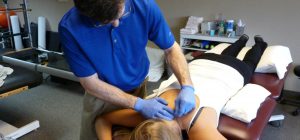 Trigger Point Dry Needling (TDN) treatment is a very effective technique used to reduce muscular pain. the technique utilizes thin, solid filament needles to deactivate and desensitize trigger points in muscles. Myofascial trigger points are painful “knots” in muscles that can contribute to pain, decreased flexibility, and decreased muscle function. It is not uncommon for a person to continue to experience pain long after the inured tissues should have healed. This can be due to trigger points in the muscles in and around the area of injury. By inserting the needles into these trigger points, a “twitch response” or brief contraction is elicited, followed by relaxation of that muscle. This results in “deactivation” of the trigger point, which reduces pain and restores normal function to the muscle. Once normal muscle function is attained, treatment can progress to strengthening and returning to normal function.
Trigger Point Dry Needling (TDN) treatment is a very effective technique used to reduce muscular pain. the technique utilizes thin, solid filament needles to deactivate and desensitize trigger points in muscles. Myofascial trigger points are painful “knots” in muscles that can contribute to pain, decreased flexibility, and decreased muscle function. It is not uncommon for a person to continue to experience pain long after the inured tissues should have healed. This can be due to trigger points in the muscles in and around the area of injury. By inserting the needles into these trigger points, a “twitch response” or brief contraction is elicited, followed by relaxation of that muscle. This results in “deactivation” of the trigger point, which reduces pain and restores normal function to the muscle. Once normal muscle function is attained, treatment can progress to strengthening and returning to normal function.
CONTACT US TODAY TO LEARN MORE!
“You made my rehab fun and enjoyable, as did your friendly staff.” JA
There are many causes of dizziness and imbalance. There are three components that help us maintain our balance throughout our daily activities which include our vision, sensation and the vestibular system. The Vestibular system includes parts of the inner ear and brain that help control balance and eye movements during all activities. When a problem occurs within the vestibular system it results in symptoms of vertigo. Vertigo is a sense of rotation, rocking or spinning when someone is perfectly still. Vertigo of peripheral (inner ear) and central (brain) origin can be addressed by a physical therapist. Specific treatments will depend on the cause of the vertigo, but can include head and neck maneuvers or other exercises to help eliminate your symptoms.
One of the most common causes of vertigo that physical therapists treat is Benign Paroxysmal  Positional Vertigo (BPPV). BPPV occurs when the small calcium crystals normally found within the inner become displaced leading to irritation to the small hair cells within the inner ear canals leading to an inappropriate communication within the vestibular system resulting in symptoms of vertigo. When the calcium crystals are displaced within the inner ear canals normal movements such as looking upward, downward, side to side or rolling over in bed can result in dizziness, spinning, nausea, and difficulty walking.
Positional Vertigo (BPPV). BPPV occurs when the small calcium crystals normally found within the inner become displaced leading to irritation to the small hair cells within the inner ear canals leading to an inappropriate communication within the vestibular system resulting in symptoms of vertigo. When the calcium crystals are displaced within the inner ear canals normal movements such as looking upward, downward, side to side or rolling over in bed can result in dizziness, spinning, nausea, and difficulty walking.
Treatment for vestibular conditions may involve repositioning maneuvers in the case of BPPV and habituation/adaptation exercises and balance exercises are usually required in cases of inner ear weakness or central vertigo disorders. The main goal of therapy is to eliminate or reduce your symptoms of vertigo to improve safety and confidence as you return to daily and recreational activities.
Non-vestibular causes of dizziness and imbalance:
Dizziness can be linked to a multitude of problems and is commonly linked to blood flow irregularities from cardiovascular conditions. It is important to follow up with your primary care physician when experiencing symptoms of dizziness. Non-vestibular causes of dizziness may include the following:
Dehydration
Side effects of medications
Orthostatic Hypotension (decreased blood pressure when changing positions)
Stress, Tension & Fatigue
Vision Disturbances (bifocals, cataracts)
Central nervous system conditions (ex. Stroke, aneurysm, tumor)
Arrhythmia (irregular heartbeat) and other cardiac conditions
Neck Arthritis (vertebral basilar insufficiency)
Chronic conditions (ex. Multiple Sclerosis or Parkinson Disease)
CONTACT US TODAY TO LEARN MORE!
“I would highly recommend Carefree Physical Therapy. Everyone is friendly and professional.” JJ
Carefree Physical Therapy recommends Fall Risk Assessment for individuals who experience balance challenges without falls, who have experienced a recent fall, or who express fear of falling and limit their activity due to that fear. As a participating Medicare provider, we provide fall history questionaire and risk assessment as part of the Physician Quality Reporting Initiative to all of our Medicare patients.
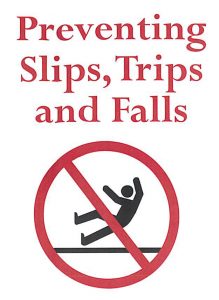 In our practice, we utilize evidence-based, functional tests to determine fall risk. These tests include:
In our practice, we utilize evidence-based, functional tests to determine fall risk. These tests include:
Functional Reach Test – standing and reaching forward
Timed Up and Go Test – stand from a chair, walk 10 feet turn and walk back to sit down
Timed Chair Rise – sit to stand from a chair 5 times without using your arms
Single Leg Stance Test – Stand on one foot with arms across your chest
The test scores that indicate if you have a low, moderate or high risk for falls. The results of these tests can also suggest which exercises and activities could be beneficial for reducing your fall risk. Additional testing may also help to determine if an assistive device or other training may be helpful.
Falls are not a part of normal aging. Risk of falling can be greatly reduced by addressing issues of balance and strength through an appropriate exercise program.
CONTACT US TODAY TO LEARN MORE!
“Best facility in fifty years of frequent therapy. Best therapists!” SF
PWR!Moves® training targets multiple symptoms associated with Parkinson’s Disease (PD). The training emphasizes four, basic PWR! Moves®:
Posture against gravity – countering the small, flexed posture commonly associated with PD
Weight shifting – to improve movement control during mobility
Trunk rotation – to reduce the rigidity with PD that interferes with efficient and coordinated movement
Transition – to improve movement from one position to another (walking, functional transfers, bed mobility, etc.)
Training the Basic 4 PWR! Moves® can occur on the floor, in sitting, or in standing and involves high velocity, large amplitude movement designed to decelerate disease progression. Research shows people with PD can GET BETTER and STAY BETTER with the right exercise!
Carefree PT PWR! Moves® exercise classes are instructed by Gillian Porter, PT, DPT, who has been leading PWR! Moves® exercise classes since 2012. Classes are $10 per person and are held on Tuesdays at 12:30pm and Saturdays at either 10:00AM or TBD, depending on the focus of the class. Please call our office at 480-488-9095 to request more information about the PWR! Moves® classes.
COVID-19 update: As of 04/01/2020, our clinic-based classes are on hold until further notice. In lieu of in-person classes, Gillian will begin posting weekly exercise videos starting the week of 04/27/2020. Click on the purple link below to view the latest PWR Moves® exercise video.
Please click the link below to see how we are working with the Parkinson’s community. Video credit to Brandon Rhea at www.digitalconcepts.us.

Contact Michelle at 602-295-4702, mgptpilates@gmail.com
In addition to the services listed above, we also offer:
- Post-surgical Rehabilitation
- Post Rehab Independent Exercise
- Acute Injuries – Spine and Extremities
- Exercise Prescription
- Sports Rehabilitation
- Industrial Injury Rehabilitation (Worker’s Compensation)
